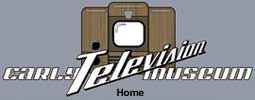Early Electronic Television The Dawn of Modern, Electronic TelevisionBy Nat Pendleton (Presented at the March, 2001 meeting of the South Carolina Historical Association )
|
 |
Early Electronic Television The Dawn of Modern, Electronic TelevisionBy Nat Pendleton (Presented at the March, 2001 meeting of the South Carolina Historical Association )
|